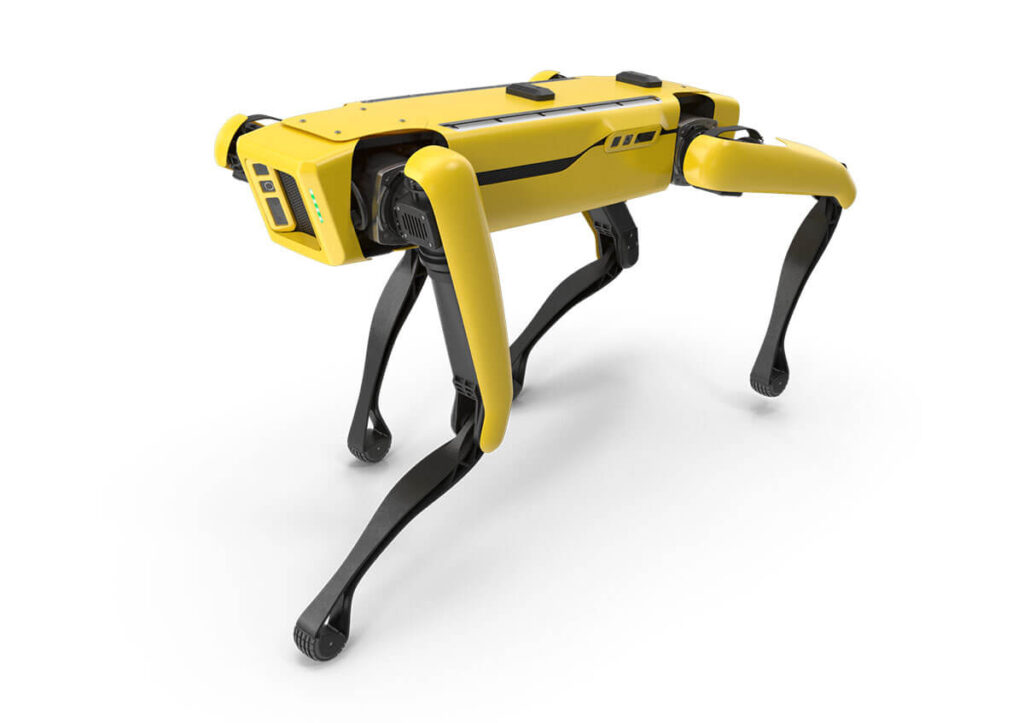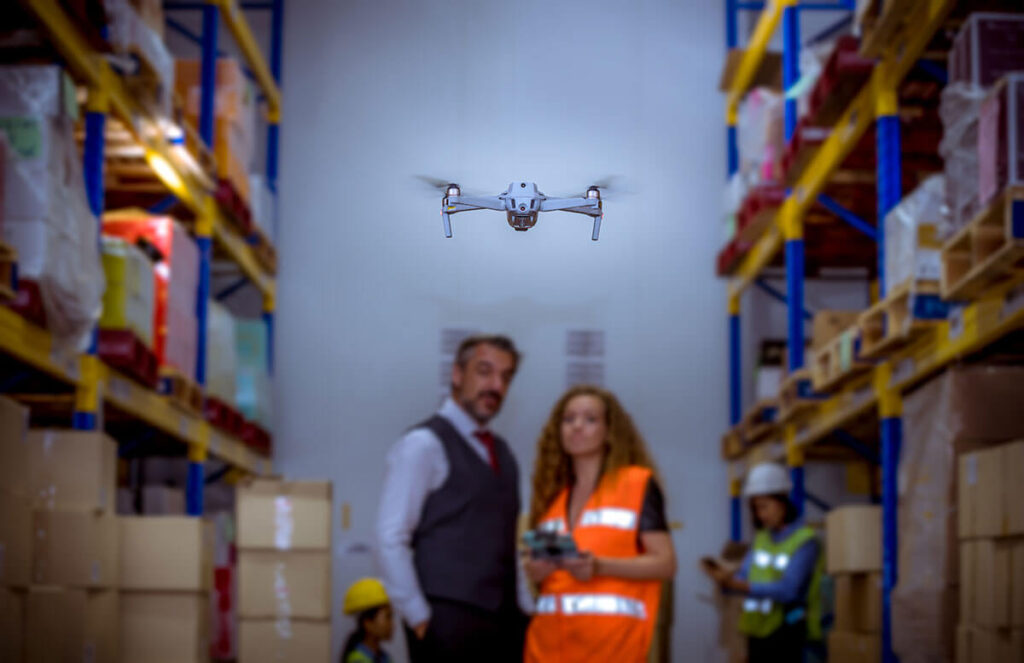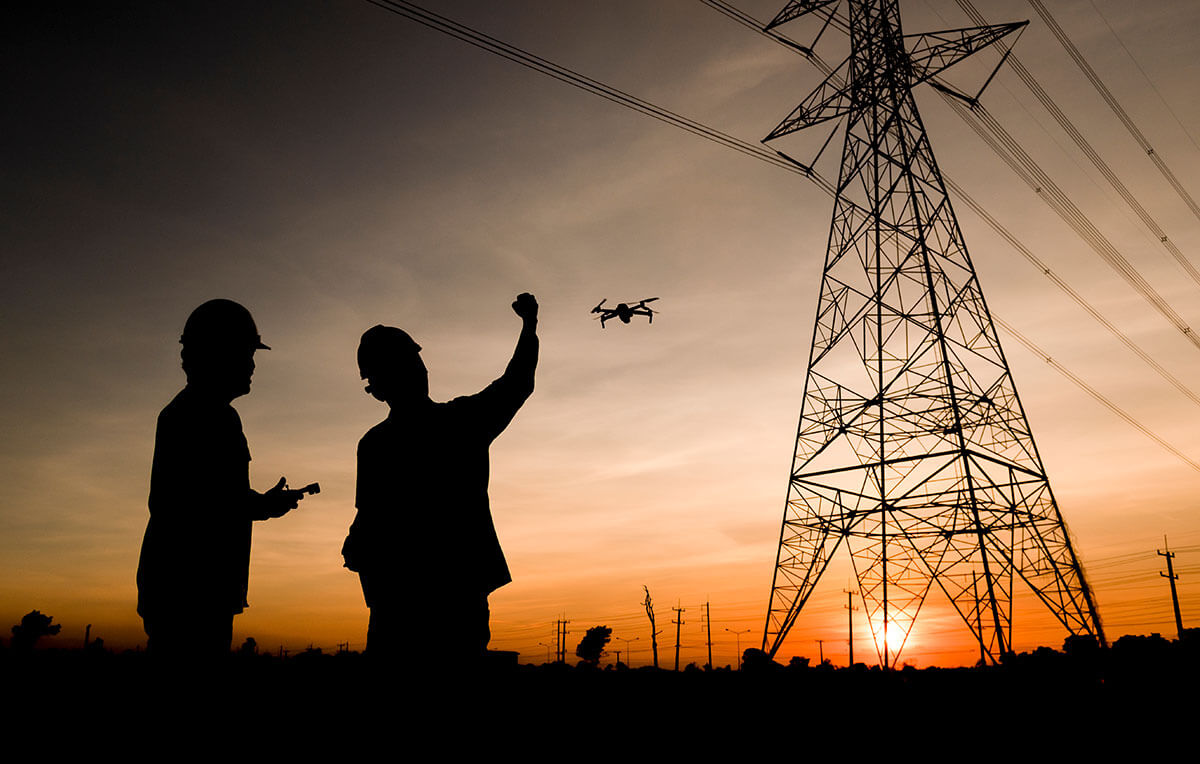2024 was a wild ride! The energy sector experienced a surge of technological advancement – and drones and robotics led the charge. We witnessed drones patrolling the skies like tiny futuristic security guards, robots inspecting oil rigs with the precision of a surgeon and AI showing off its smarts to make them all look even cooler.
As we reflect back on how the energy industry experienced incredible strides in technological innovation, we felt the best way to spotlight the year’s defining stories was to provide a wrap up of the top 5 stories of the year from the Energy Drone & Robotics Coalition. Read on to revisit the breakthroughs, success stories and trends in drone and robotics that reshaped how energy companies approach efficiency, safety and sustainability.
#5 – Match Made in Heaven: Drones and AI
AI and drone technology proved to be a dynamic tech duo that radically impacted industries from energy and utilities to logistics and defense (Think peanut butter and jelly, but with algorithms and propellers). AI enhanced drone operations with machine learning, big data and cutting-edge algorithms. This enabled drones to autonomously navigate, detect issues and process visual data.
This popular article highlighted how this drone + AI combination streamlined power line inspections and minimized manual labor for the utility sector. Beyond utilities, we also showcased the broad versatility of this technology through a wide variety of use cases, from AI-enabled weather forecasting and disaster response to military applications. With AI and drones working together, industries achieved unprecedented efficiency, accuracy and innovation.
#4 – The Next Era of Industrial Robotics
In this piece, we summarized Siemens’ report, Tech Trends 2030: The Next Era of Industrial Robotics, which painted a compelling picture of the future of robotics. It highlighted four transformative trends reshaping the industry. Among these, the rise of collaborative robots (“cobots”) was front and center, as these adaptable, energy-efficient machines represented 10% of new installations. The other key trends included AI-powered autonomous robotics, intuitive interfaces driven by generative AI, and virtual training enabled by digital twins and the industrial metaverse.
The report underscored the potential for robots to work smarter, safer and closer to humans with envisioned scenarios like robot companions on shop floors, self-optimizing automation systems and localized manufacturing. It also emphasized the importance of connectivity, cloud and edge computing and workforce upskilling to master this next era of dynamic, sustainable and agile production.

#3 – Autonomous Drones in Manufacturing Site Security
This roll up of a presentation from Catherine Tea, an expert from the Robotics Department at Dow, from the 2024 Energy Drone & Robotics Summit, highlighted the critical role of autonomous drones in manufacturing site security.
Tea spotlighted a case study from Dow’s Gulf Coast operations where autonomous drones patrol miles of fence lines to provide real-time video feeds, night vision and thermal imagery. Although Dow uses quadrupeds for ground-level inspections, Tea noted that drones excel at providing aerial surveillance and rapid response. Dow’s drone patrols have drastically reduced human risks, cut labor costs and improved security response times across Dow’s expansive facilities.
Tea emphasized that Dow will continue to explore autonomous drone technology to meet its operational and security needs and expressed optimism about the broader value drones bring as a practical solution for modern manufacturing challenges.
#2 – Chevron Uses Spot Robots for Inspections and More
Here we discussed Chevron’s deployment of Boston Dynamics’ four-legged Spot robots to enhance safety, inspections and operations in its oil and gas facilities. This energy producer equipped the robots with advanced sensors, such thermal cameras, PTZ cameras, acoustic leak detectors, gas detectors and LIDAR for navigation to enable Spot to perform visual observations, asset inspections and automated data collection.
By automating inspection routes, Chevron noted that Spot can gather valuable data around the clock. This created efficiencies that traditional methods cannot match. Additionally, Spot’s ability to collect consistent, quantitative measurements allows Chevron to make more predictive and reliable decisions.

#1 – Determining ROI of Utility Drone Inspection Programs
In our most popular article of the year, readers got to learn about the return on investment (ROI) of drone programs for utility operations. Such programs offer both measurable cost savings and intangible benefits. We outlined factors to evaluate such ROI:
- Set Objectives: Define goals like cost reduction, safety improvement or increased inspection frequency.
- Document Costs: Account for drones, pilots, software, and maintenance.
- Compare Alternatives: Assess costs of traditional methods like ground or helicopter inspections.
- Analyze Benefits: Include safety, efficiency and better data insights.
- Set a Timeline: Define the timeframe for measuring ROI.
- Calculate ROI: Compare costs and benefits, factoring in long-term goals and scalability.
We explained how drones excelled in frequent, detailed inspections by reducing risks and improving data quality. While initial costs could be high, overall efficiency and safety advantages ultimately deliver long-term value, even if precise ROI varied by organization.
Wrapping Up 2024 and Looking Ahead to 2025
These top 2024 articles from Energy Drone & Robotics illustrate how cutting-edge technology has impacted industries worldwide. From Siemens’ vision for the next era of industrial robotics to Dow’s game-changing use of autonomous drones for site security, these stories highlighted the convergence of robotics, AI and digital twins in modern energy operations. They also showcased the potential of robotics and drones to enhance safety, efficiency and sustainability in the energy sector. These advancements remind us of the importance of continual innovation and that a commitment to technology adoption can create smarter, safer and more efficient workplaces.
As we move forward, the future of energy, drones, and robotics appears to promise limitless opportunities for progress and transformation. What will be the top use cases, trends and tech we will be talking about in 2025? Be sure to explore this with us at the Energy Drone & Robotics Summit, from June 16-18 in Houston, TX, “Where the global energy UAV industry meets!”
By: Sean Guerre and Megan Horn

